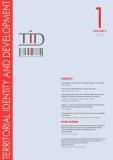USING G.I.S. PRODUCTS FOR ANALYSING THE POTENTIAL OF PRACTISING SUSTAINABLE TOURISM AND DEVELOPING ZECE HOTARE VILLAGE
USING G.I.S. PRODUCTS FOR ANALYSING THE POTENTIAL OF PRACTISING SUSTAINABLE TOURISM AND DEVELOPING ZECE HOTARE VILLAGE
Author(s): Alina ToderaşSubject(s): Museology & Heritage Studies, Agriculture, Rural and urban sociology, Economic development, Tourism
Published by: Universitatea Babeş-Bolyai
Keywords: heritage; rural tourism; agritourism; economic development;
Summary/Abstract: Zece Hotare village (Bihor County, Romania) is part of the disadvantaged areas category, being a former mining village, due to the exploitation of bauxite and clay resources. Today, its socio-economic situation is precarious, the econom c sector being poorly developed, and the population is constantly declining. At present, it is an agricultural and forestry village. One of the solutions that could lead to achieving a balance and improving the economic situation and maintaining the existing population in the village, would be to capitalize on local resources by practicing rural tourism, in particular agritourism. Although recreational tourism is sometimes practised, agritourism is currently non-existent within the area. However, by practicing agritourism, the specific values, customs and traditions would be promoted. This study aims to propose and analyse possible options for the development of rural tourism, mountain tourism, ecotourism, agritourism, and cycling tourism, as well as which activities should be undertaken to practise these forms of tourism and to attracting tourist flows towards Zece Hotare village. Some of the proposals for tourism development in Zece Hotare provided in the study are as follows: construction of boarding houses; presentations addressed to locals about what the practice of agritourism involves, in order to observe their degree of openness and availability to contribute to practicing this form of tourism as hosts; creating thematic paths for picking medicinal plants; creating a cycle tourist route that includes a tour of the hamlets in the village; building boutiques where locals can sell their products, such as honey, bakery products, woven and embroidered clothes, wooden objects, etc.; arranging places for camping, arranging places for leisure activities, and others.
Journal: Territorial Identity and Development
- Issue Year: 5/2020
- Issue No: 1
- Page Range: 68-98
- Page Count: 31
- Language: English

